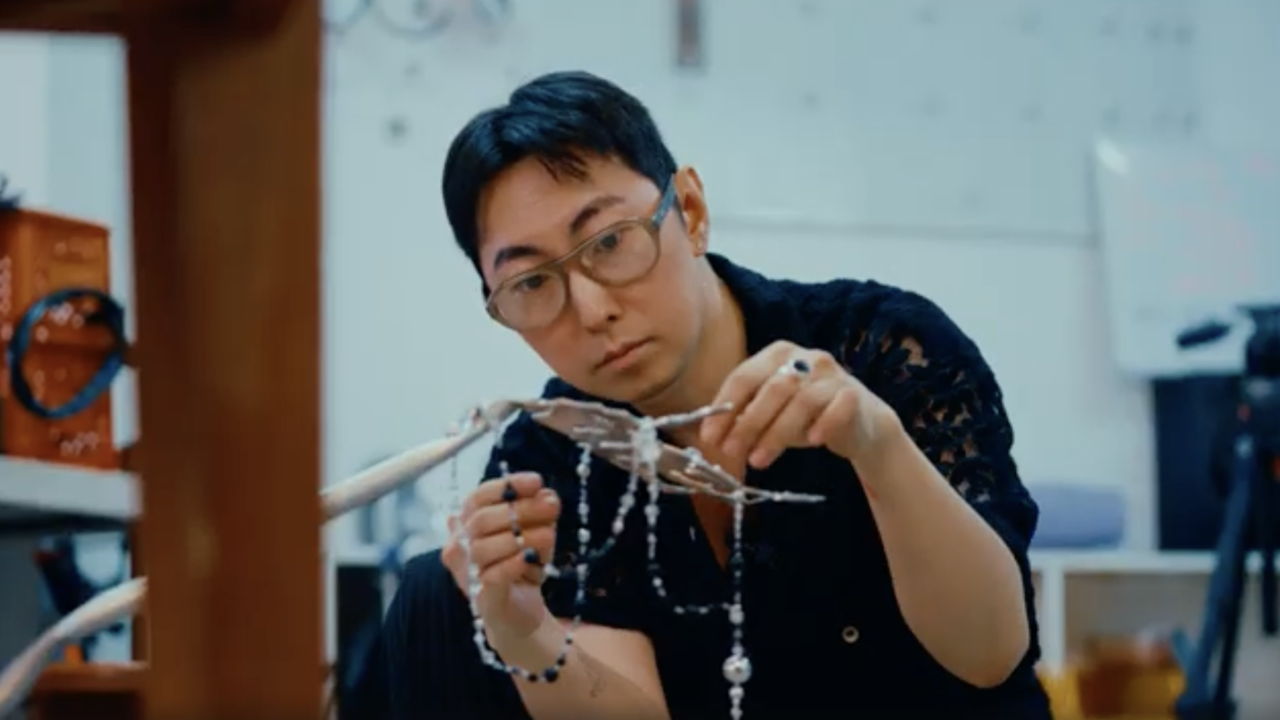Kilian Rüthemann
Haus Konstruktiv
Haus Konstruktiv

Though the noble Haus Konstruktiv now shows artists beyond its original remit of Constructive and Concrete art, this institution keeps art on a tight leash. The Constructivists worked at permeating other disciplines and thus life at large, often in glorious floods of colour, but control was always de rigueur. It takes an artist like Kilian Rüthemann, whose work is both explicit and unpredictable, to push the solemn boundaries of this legacy.
For several years Rüthemann has been pursuing a binary method, investigating the qualities of commonplace materials such as roofing tar, girders or glass, and doing so in direct response to the given exhibition space. In Zurich, the main space was occupied by Room for milk (2012), ten large blocks of malleable white foam wedged between the six pillars that line the middle of the room. These cubes had all the regularity of minimal sculpture, but pushed into place between the thin supports they jostled against each other, bulging slightly against the pressure that kept them suspended above the floor like giant sugar cubes on string. A peculiarity of the two adjoining smaller rooms is that each has a window allowing sight of a massive pulley from the building’s previous life as an electricity substation; in these rooms were Scratch (left to right) (2012) and its symmetrical partner Scratch (right to left) (2012), deep gouges in the wall making Zorro-like diagonal lines edged with the strata of countless coats of paint from previous shows, Rüthemann’s intervention revealing how it now functions as an operational art space.
The title of the central work, and exhibition title, is taken from the question asked by baristas: should I leave space for milk? One that Rüthemann often heard during a recent residency in New York. The press release interprets this as the viewer’s choice to engage with the work as they wish, though this is a moot point, as while art can determine a viewer’s physical interaction, our thoughts regarding it are always free. On the other hand, the question redefines a lack as potential – a cup is not half empty of coffee but half full of space for an addition. (To riff on the dairy theme, the foam was gradually going off through exposure, turning from white to a stale, pale yellow.) Rüthemann had redefined the columns as not merely the supports that facilitate a room for showing art but as the integral scaffold of a sculpture.
Different groups of artists with diverse aims have claimed or been labelled with the name ‘concrete’, so commonality is not a given, but Rüthemann’s updated version chimes not only with his Swiss forebears, but most accurately with the Japanese Gutai (commonly translated as ‘embodiment’ or ‘concrete’) group, whose manifesto called for art to bring materials to life rather than imposing form upon them. Clap your hands in the exhibition space at the Haus Konstruktiv and you’ll find it has a killer echo, and with its great mass squeezed into place the foam of Room for milk was so vivified that its rhythm was not just a visual, but a haptic and audible addition to the room.
















